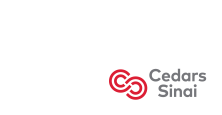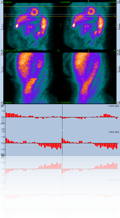
|

|

| |
PLEASE TURN ON JAVASCRIPT TO ALLOW THIS WEBSITE TO FUNCTION AS INTENDED.
Visit the Suite 2017 page for information about the latest version of Cardiac Suite.
Cedars-Sinai Cardiac Suite 2015
Version 2015 of the Cardiac Suite brings a host of new features and improvements. Here are some that you might be interested in.
 Image Quality Control Tools
Image Quality Control Tools
A new page is now available in QGS+QPS and QBS. The Quality page allows you to assess your data for acquisition issues. Sinograms, linograms, and count graphs (per projection and per interval) quickly alert you of problems such as gating errors and patient motion that may lead to incorrect image interpretation.
Smart Defect Editor
Sometimes a study appears normal by all measures, but quantitative analysis reports a small defect. You know this defect is an artifact, because you have knowledge of this patient that no program can replicate. The smart defect editor allows you to manually modify (edit, add, or remove) defect regions to match your vision. This way, you never have to report a study as normal with polar map defects or non-zero scores or TPD. You can also edit defects to better match knowledge of specific coronary territories.
Configurable Data Selector
We've made it easier than ever to select datasets according to your workflow and your preferences. Do you like to compare attenuation-corrected and non-corrected images? You can set that up to be the default. Do you perform prone acquisitions? Easy to configure. Do you have different preferences for different pages? No problem. More than ever, QGS+QPS works the way you do.
Color Palette Import / Export
We know that everyone has their own preferences when it comes to color scale selection. You can now import and export color palette files to improve consistency across platforms. We support several common color scale formats.
Reporting
Our automated report generator, ARG, has received a lot of attention in preparation for the wide availability of the ASNC ImageGuide Registry. The final specification for data transfers to the registry is not yet available at the time of this writing (March 19, 2015, updated July 2, 2015), but ARG will be ready as soon as this information is finalized. In addition, ARG also got administrative reports for department managers, custom fields, and a centralized distribution server available as a Windows service for improved delivery of reports and data to other systems.
There's more!
Suite 2015 also includes a number of algorithm improvements, new display options, and fixes for common little annoyances.
And let's not forget the improvements we brought in past years
Single QGS+QPS application with TID and LHR, group processing, multi-monitor support, enhanced motion/thickening limits, CFR and MBF, automatic registration, native OS X support, to list but a few.
System requirements
Cedars-Sinai Cardiac Suite 2015 supports Windows 7 and later (7, 8, 8.1, and soon 10), and Macs running OS X 10.8 (Mountain Lion), 10.9 (Mavericks), and 10.10 (Yosemite).








